Machu Picchu Express - 7 Days






 View All PhotosView All Photos
View All PhotosView All PhotosCultural
Easy
Cusco, Lima, Machu Picchu, Sacred Valley
Archaeological / Architecture, Nature
cardinfo-price-per-adult
| cardinfo-text-5 | ||
| cardinfo-text-7 | Not included | |
| cardinfo-text-8 | cardinfo-not-included | |
cardinfo-text-10
h2-title-1
On this exclusive Machu Picchu Express tour, you will enjoy memorable experiences as you explore this culturally rich country. Take our Machu Picchu trip package itinerary for 7 Days to enjoy the perfect vacation. On our Machu Picchu Express tour, you will discover the magnificent Inca capital of Cusco. Here you will experience the magical heritage of Peru´s ancestral civilization. Take a holiday adventure to the mystical city of Cusco, wander through the colorful villages located in the Sacred Valley of the Incas, and embrace the mystery of the world-famous Sanctuary of Pachacutec at Machu Picchu. Within the mountains surrounding Cusco lie a wealth of ancient Incan temples, Spanish colonial towns, and breathtaking Andean vistas.
There is no place in the world that compares with Machu Picchu when it comes to unique spiritual energy and absolutely majestic beauty. Travel aboard the Expedition Train to the historic Seventh Wonder of the World, Machu Picchu. Live the best experience of your life. Come join us on our 7 day Machu Picchu Express Tour and make your dreams a reality.
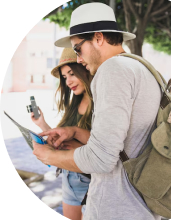 Free Brochure
Free BrochureReady to explore? Download the brochure and start planning!
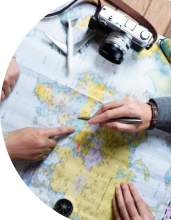
Your FREE travel expert is just a click away
Or Call us now! (888) 803 8004
h2-title-2
Day 1:Welcome to Lima!
From the moment you arrive in Lima to begin your 7 day Machu Picchu Express tour, a team member of Valencia Travel will be waiting for you at the Lima airport to take you, in private transport, to your Lima hotel. You will then have all day to relax and enjoy the beauty of Lima and its surroundings on Lima city sightseeing and cultural tours.
- Meals: Not Included
- Transfer In: Lima Airport - Hotel (1 hour approx).
- Tour Guide: Local Tour Guide: English/Spanish
- Hotel: Casa Andina Standard Benavides itinerary-service-hotel-extra
Day 2:Lima The City of Kings
On this fantastic guided tour in Lima, you will explore the beautiful and fascinating City of Kings. Today after breakfast, we will head out on out on Lima city sightseeing and cultural tours. The first stop on our Peru tour is Huaca Pucllana, a huge archaeological site in Miraflores, one of Lima’s most popular districts. We will then drive to the historic center of Lima, all of which is a designated UNESCO World Heritage site. We’ll visit the beautiful Plaza de Armas (Lima’s main square) which is surrounded by impressive colonial and Republican-era buildings, many of which have ornate wooden balconies. Some of Peru’s most important buildings surround the square, including the Government Palace, the Cathedral of Lima, the Archbishop's Palace of Lima, the Municipal Palace, and the Palace of the Union. We’ll visit the Cathedral of Lima, which was completed in 1649. It’s a huge structure, with a large central nave and 14 side chapels. Inside, we’ll see the sculptures and paintings that decorate the interior. The cathedral is also home to the tomb of the conquistador Francisco Pizarro.
Next, we’ll walk one block to the Convent of Santo Domingo. Founded in the 1530s and completed in 1766, it is one of the most important religious buildings in Peru, and its large bell tower is a landmark in the historic center of Lima. As we walk around the interior of the convent, we’ll see the beautiful Sevillian "azulejos" (ceramic tiles) that decorate the walls, dating from 1604 and 1606. There is also a series of paintings that present passages of the life of Saint Dominic, the founder of the Dominican order, which dates to around 1608. This is the last stop on our Lima city sightseeing and cultural tour, but if you want to know more about this fascinating and historic city, you can join us on one of our Lima city tour extensions as part of this Machu Picchu Express Tour.
- Meals: Breakfast
- Tour Guide: Local Tour guide: English/Spanish
- Excursion: Lima City Tour - Private Service (4 hours Approx.)
- Entrance Fee: Santo Domingo Convent (Only)
- Hotel: Casa Andina Standard Benavides itinerary-service-hotel-extra
Day 3:Lima to Cusco
After breakfast, a representative of Valencia Travel Cusco will pick you up from the hotel (time to be confirmed) and take you to the airport where you will take your flight to Cusco. When you arrive in Cusco, we will meet you with a transfer to your hotel; a welcome meeting will be organized by your guide for a quick briefing for the rest of the tour.
In the afternoon, we will head first to the imposing Inca fortress of Sacsayhuamán, perched on a hill above Cusco. Here, you will witness some of the finest examples of Inca masonry and construction, including enormous boulders that were meticulously cut and perfectly fitted to form the walls.
After exploring Sacsayhuamán on our Cusco tours, we will climb the hill to Qenqo, one of the most intriguing archaeological sites of the Inca civilization. This enigmatic sanctuary, whose name in Quechua means "labyrinth" or "zigzag," offers visitors a fascinating mix of history, spirituality, and architecture. From here, you will also enjoy beautiful panoramic views of Cusco.
Next, on our Cusco excursions, we visit the Tambomachay Archaeological Complex. The exact purpose of this site is unknown, but it may have functioned, at least in part, as an Inca spa. Incan hydraulic engineering is evident here, with a series of aqueducts, canals, and waterfalls running through the terraced rocks.
We then continue to the wonderful Koricancha, adjacent to the Church of Santo Domingo. According to chroniclers writing during the period immediately following the Spanish conquest, the Koricancha was the most sacred and important temple in the Inca Empire. Its walls were covered in gold, and life-size statues of plants and animals, all made of pure gold and silver, decorated its rooms and hallways. Sadly, this wealth was stripped away by the Spanish conquistadors. However, it remains a magnificent temple, and your Cusco private tour guide will show you details that you would almost certainly miss if you visited without a guide.
After visiting the Koricancha, we will head to the Cusco Cathedral, located in the Plaza de Armas. Built between 1560 and 1654 on the foundations of an existing Inca temple, this spectacular cathedral houses many works of art from the Cusco School of painters, and its main altar and pulpit are covered in gold and silver reliefs. Look closely, and you will also see elements of indigenous religious symbolism incorporated into the church by the natives who worked on its construction, such as the carved head of a jaguar on the doors.
Finally, our guide will bid you farewell, offering restaurant recommendations for a delicious meal (not included) or providing directions on how to return to your hotel.
- Meals: Breakfast
- Transfer Out: Lima Hotel - Lima Airport
- Transfer In: Cusco Airport - Cusco Hotel
- Tour Guide: Local Tour Guide: English/Spanish
- Excursion: Cusco City Tour & 4 Ruins - Private Service (4 hours approx).
- Entrance Fee: Cathedral and Koricancha
- Hotel: Casa Andina Standard Cusco Plaza itinerary-service-hotel-extra
Day 4:Sacred Valley Tour
We will pick you up from your hotel in Cusco at 08h00 and then set off on our day trip from Cusco to the Sacred Valley. Leaving Cusco, we’ll pass by Saqsaywaman and head over the mountains before descending some 450 meters (1,500 ft) to the valley floor. Here we’ll find ourselves beside the sacred Urubamba River and the pretty village of Pisac. In Pisac, we will visit the colorful traditional market, where you can browse the array of local artisan work and other souvenirs – which of course you can buy to take home with you. We’ll spend about 30 minutes here, and then head up to the ruins of Pisac which sit atop a hill at the entrance to the valley.
At the Pisac archaeological site, we’ll explore the extensive ruins and enjoy the beautiful views across the valley. You’ll be given a guided tour of the ruins, passing through various structures that once served as homes, storage rooms, and temples, and you’ll see Inca altars, carvings, tunnels, caves, and the famous Intihuatana, the “hitching post of the sun.” We’ll explore Pisac for about 90 minutes. Alternatively, if you’d like to spend more time in the market in Pisac instead of seeing the ruins, you can talk to your guide and arrange a time and a place to meet when the tour group returns through the market after the ruins.
We’ll now head on towards Urubamba, where we’ll stop for about 45 minutes for lunch (not included). After another 30-minute drive, we’ll reach the wonderful Inca town and archaeological site of Ollantaytambo. Ollantaytambo was the royal estate of the Inca emperor Pachacuti, who conquered the region and built the town and a ceremonial center. We’ll spend about an hour exploring these magnificent ruins, visiting the amazing Temple of the Sun, and seeing massive blocks of rock that were perfectly carved and polished by master Inca stonemasons. Ollantaytambo is also a fine example of Inca agricultural construction and hydro-engineering, with a complex series of stone water fountains, channels, and agricultural terraces, the latter organized by elevation to create different microclimates for crop experimentation.
We’ll see the extent of the water system when we return to the town, where fast-flowing water channels built by the Incas are still in use today. Walking to the town square, we’ll have great views of the ruins above us, as well as Inca granaries and storehouses built on the sides of the surrounding mountains. Here we can also watch the daily life of Ollantaytambo, where many of the locals still wear traditional dress.
After Ollantaytambo, we’ll drive to Chinchero where we’ll spend about 30 minutes visiting the famous church and the massive Inca stone wall in the main plaza, which has ten trapezoidal niches. The colonial church, meanwhile, dates back to the early 17th century and was built upon the foundations of an Inca temple or palace. The walls of the church are covered in wonderful floral and religious designs. The people of Chinchero are very much connected to the old traditions, and many still dress in colorful clothes that combine indigenous and Spanish influences. We’ll also have wonderful views from Chinchero, as the village is surrounded by the beautiful snow-capped peaks of Chicón and Veronica.
This is the last destination on our Sacred Valley tour from Cusco, so now it will be time to head back to Cusco, where we’ll drop you off at your hotel.
Highest altitude: 3,762 m (12,342 ft).
Lowest Altitude: 2,792 m (9,160 ft).
- Meals: Breakfast
- Tour Guide: Local Tour Guide: English/Spanish
- Excursion: Sacred Valley Tour ( 8 hours approx).
- Entrance Fee: Tourist Ticket
- Hotel: Casa Andina Standard Cusco Plaza itinerary-service-hotel-extra
Day 5:Cusco to Aguas Calientes
This morning you will be picked up at 09h00 to head to the train station to board the train to Aguas Calientes, the gateway to Machu Picchu! The train leaves at approximately 11h30 (time may change depending on availability and changes to the timetable). After a 2-hour journey of majestic views, arrive at Aguas Calientes to spend the night. Also known as Machu Picchu Pueblo, this town lies in a deep gorge below the ruins. A virtual island, it’s cut off from all roads and enclosed by stone cliffs, towering cloud forest, and two rushing rivers. Aguas Calientes is the home of thermal hot springs, on arrival, (not Included) there will be plenty of time to relax and enjoy a hot bath in the natural springs if you choose to.
- Meals: Breakfast
- Tour Guide: Local Tour Guide: English/Spanish
- Transfer: Cusco - Ollantaytambo Train Station
- Train Ticket: Ollantaytambo to Aguas Calientes
- Hotel: Hatun Inti Boutique itinerary-service-hotel-extra
Day 6:Machu Picchu in all its Glory (and Return to Cusco).
To best appreciate Machu Picchu, we’ll wake up early in the morning so we can get to the citadel in good time. You’ll have time for breakfast first, and then your guide will pick you up from the hotel at around 5:40 a.m. Then we will walk to the starting point of the bus, a trip of approximately 45 minutes in the direction of the citadel of Machu Picchu.
We’ll then pass through the gates to the Machu Picchu archaeological site. Here you’ll begin your guided walking tour with an experienced and highly knowledgeable guide. Our tour of Machu Picchu will last about two hours and will take you to all the most famous and spectacular parts of the extensive archaeological complex. These include the House of the Guardian, Intihuatana, Temple of the Sun, Sacred Plaza, and other key locations. (It will depend on the circuit that the Ministry of Culture determines).
And as we walk around, we’ll have spectacular views across the agricultural terraces of Machu Picchu and across to the surrounding mountains and plunging gorges.
Once we’ve finished our tour of Machu Picchu, we’ll take the bus back down to Aguas Calientes where you can relax and have lunch (not included) before we board the train back to Poroy and Cusco. Upon arrival at the station, our staff will be waiting for you to take you back to your hotel in Cusco, a quick trip of approximately 25 minutes, where you will be able to remember your incredible tour of one of the most famous and impressive attractions in the world.
- Meals: Breakfast
- Tour Guide: Local Tour Guide: English/Spanish
- Bus: Aguas Calientes - Machu Picchu - Aguas Calientes (20 min approx).
- Entrance Fee: Machu Picchu Citadel
- Train Ticket: Aguas Calientes to Ollantaytambo or Poroy
- Transfer: Ollantaytambo Train Station - Hotel
- Hotel: Casa Andina Standard Cusco Plaza itinerary-service-hotel-extra
Day 7:Hotel - Cusco Airport
After breakfast enjoy your last day at leisure before transferring to the airport for your return flight home via Lima.
- Meals: Breakfast
- Transfer Out: Hotel - Cusco Airport (20 minutes) - Assistant in English/Spanish.
h2-title-3
Secure your spot on the trip now with our real-time availability information.
Act quickly—these spots sell out fast!
h2-title-4
whats-included-title
- Accommodation: Lima Hotel (2 nights), Cusco Hotel (3 nights) - 3 stars. Aguas Calientes (1 night) - 4 stars.
- Transfers as mentioned.
- Professional English-speaking guide service.
- Trains: Ollantaytambo – Machu Picchu – Poroy. (Vistadome Train for 4-star and 5-star packages / Expedition Train for 3-star packages).
- All national park fees, entrance fees, taxes, permits, and vehicles as applicable to the above itinerary. Food: all of the meals specified on your program. Vegetarian meals or special diets are available upon prior request.
- First aid kit with Oxygen.
- Round trip bus ticket from Aguas Calientes to Machu Picchu.
- 24/7 support and emergency line available throughout the itinerary.
whats-not-included-title
- Travel insurance.
- Evacuation: in the event of a serious medical injury, we will coordinate with your travel insurance company to arrange evacuation.
- Meals and drinks other than those mentioned in the itinerary.
- Internal flights.
- Tips and gratuities.
- Optional excursions.
- Items of a personal nature such as souvenirs and telephone calls.
h2-title-5

specialist-box-title
Maria Diaz
specialist-box-phrase
top-tours-title
top-tours-info

Trek Along the Inca Trail To Machu Picchu
7daysTrek Along The Inca Trail To Machu Picchu with Valencia Travel. We are a renowned Peruvian tour company offering trekking experiences throughout Peru.
card-type-tagAdventure
card-activity-tagModerate - Demanding

Classic Peru Trip
7daysValencia Travel's classic Peru trip is a bucket-list adventure. This 7 Day trip will take you on unforgettable experiences throughout the Peruvian heartland.
card-type-tagCultural, Gastronomy
card-activity-tagEasy

Classic Inca Trail
4daysThe Inca Trail trek to Machu Picchu is the ultimate bucket list hiking experience! Join us on this Classic 4 Day & 3 night Inca Trail Hike!
card-type-tagAdventure
card-activity-tagModerate - Demanding
asso-info-title
asso-info-description
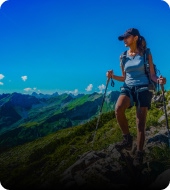 Aventure
Aventure
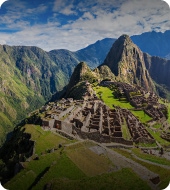 Cultural
Cultural
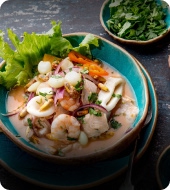 Gastronomy
Gastronomy
 Wellness
Wellness
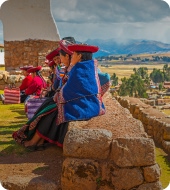 Local Living
Local Living
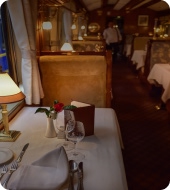 Luxury
Luxury









































